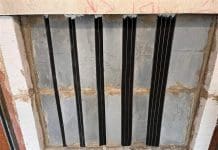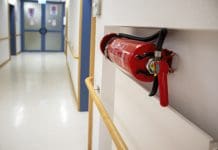When servicing fire extinguishers, can you use generic parts or should you buy from the manufacturer?
Everyone remembers that old advert from the 90’s with the slogan – ‘it does what it says on the tin’. And you’d hope, that when you picked up a fire extinguisher, it would do exactly that.
Now this may cause some mixed feelings, but most people when they pick up a fire extinguisher with a company logo on it would expect that the entire extinguisher (including the contents) are made by the company that is on the extinguisher. But sometimes, this isn’t actually the case. Some components may be made by a different manufacturer.
As a consumer, that may come as a surprise.
The key message: think of the customer.
When you’re maintaining and servicing a portable fire extinguisher, you have the option of buying spare parts and refills from the manufacturer or buying generic refills and components. But how should you go about this? In what instance is it okay to use generic parts, and when should you really buy directly from the manufacturer?
Demystifying the standard
BS 5306-9: 2015 acknowledges that the manufacturer’s refill or component is the best option because it’s the safest. However, this standard also discusses the term ‘verified alternatives’, which is all about ensuring safety.
An ‘alternative’ is a little bit like when you get your car serviced – if you’ve got a Honda for example, and you take it to the Honda garage, some garages will say ‘Honda genuine parts’ – so it’s your assurance that those parts are going to work in that car. But some of those parts might also be generic.
If you’ve got an extinguisher made by company X, and you buy the parts from company X, you know the parts are going to be compatible and they’re going to work with that extinguisher.
If you buy generic components, you need to make sure that they are going to be safe, and they are going to work. This is where we have the term, ‘verified alternatives’.
When it comes to extinguishers, generic parts might fit but there is a possibility that they might not work as expected. The advice here is to stick with buying from the manufacturer to ensure optimum performance.
But ‘verified alternatives’ give service companies the option to use parts from other manufacturers. But the question remains – how do you know which parts can be safely substituted for an ‘alternative’ to the original manufacturer’s part?
Performance critical and safety critical
When considering verified alternatives, there are two key categories to consider – ‘performance critical’ and ‘safety critical’.
‘Performance critical’ are those components of the extinguisher that will make sure that it does what it is supposed to do: that it is going to be safe, reliable, efficient, and it is going to be fit for purpose.
The ‘safety critical’ ones are the ones that aren’t directly linked to the performance of the extinguisher but are still important from a safety perspective. For example, the anti-tamper device – the little tag bit that you pull off before you pull the pin out. Where you buy that plastic tamper from isn’t quite as important as the contents that are in the extinguisher. As long as that plastic tag will do what it’s supposed to do, i.e. not break when it’s not doing anything but break when you want it to, it doesn’t matter so much whether you bought it from the manufacturer as long as it meets the criteria specified in EN3.
Performance critical spare parts include the refill (e.g. foam, additive or powder), the internal discharge tube, and the cartridge. Safety critical parts include wall brackets, the safety pin, and the tamper device. There are quite a few more listed in our handy technical document, ‘FIA Position on BS 5306-9: 2015’, ‘Verified Alternatives’, where you can see which parts are most important for optimum performance, and which parts are more general safety critical spares.
What the standard says
BS 5309-9:2015 says that if you are using non-manufacturer’s components or refills, you need to get confirmation from the supplier that the component or refill will work in that extinguisher from whoever supplied the components.
The FIA view is that it is best practice to simply use the manufacturer’s specified components and medium. You can read more about this in the Guidance Document below, which goes into further detail.
One of the important things to remember is that, if a service provider uses something different to what the manufacturer has recommended, then the service provider has to become responsible for what they’ve put in that extinguisher, or components they’ve used on it. Otherwise the customer – the person that owns the extinguisher – will assume, unless they’re told otherwise – that if they have an extinguisher with Company X brand on the outside, that all the components and the media that is put inside, is also made by Company X. As a result, the standard says that if you put something different in the extinguisher, you have to tell the customer.
The benefit of membership
If you’re a smaller company, then FIA membership has its perks here. If you think that your business is too small to buy from a big manufacturer – then here’s a piece of good news: you can.
FIA membership is all about networking and being part of a bigger supply chain. Many large manufacturers are already members. If you’re a member, then it becomes easier to speak to other members and get supplied with the parts you need.
If you’re buying a generic part, thinking ‘I’m too small, or I can’t buy them off the big manufacturers’, you can, because that’s one of the parts of being part of the FIA. We can’t refuse another member, can we!
Download FIA Position on BS 5306-9: 2015, ‘Verified Alternatives’>>
Mark Bristow is the Group Quality Manager at NuSwift International, an FIA member company. He leads the compliance and improvement requirements of London Security plc through one of its group companies Nu-Swift International. Mark sits on a number of FIA working groups and councils, making the most of his company membership.




![[Video] Fireco: 80 new fire doors required for residential flats in London](https://www.pbctoday.co.uk/news/wp-content/uploads/2025/04/2024-06-01-Lords-view-one_1200x750_004-218x150.webp)
![[VIDEO] Making DorTrak reports easy to read with Fireco Inspecting fire doors at Fireco, firedoor technology, 2023](https://www.pbctoday.co.uk/news/wp-content/uploads/2024/04/JPZ_2364-web-218x150.jpg)







